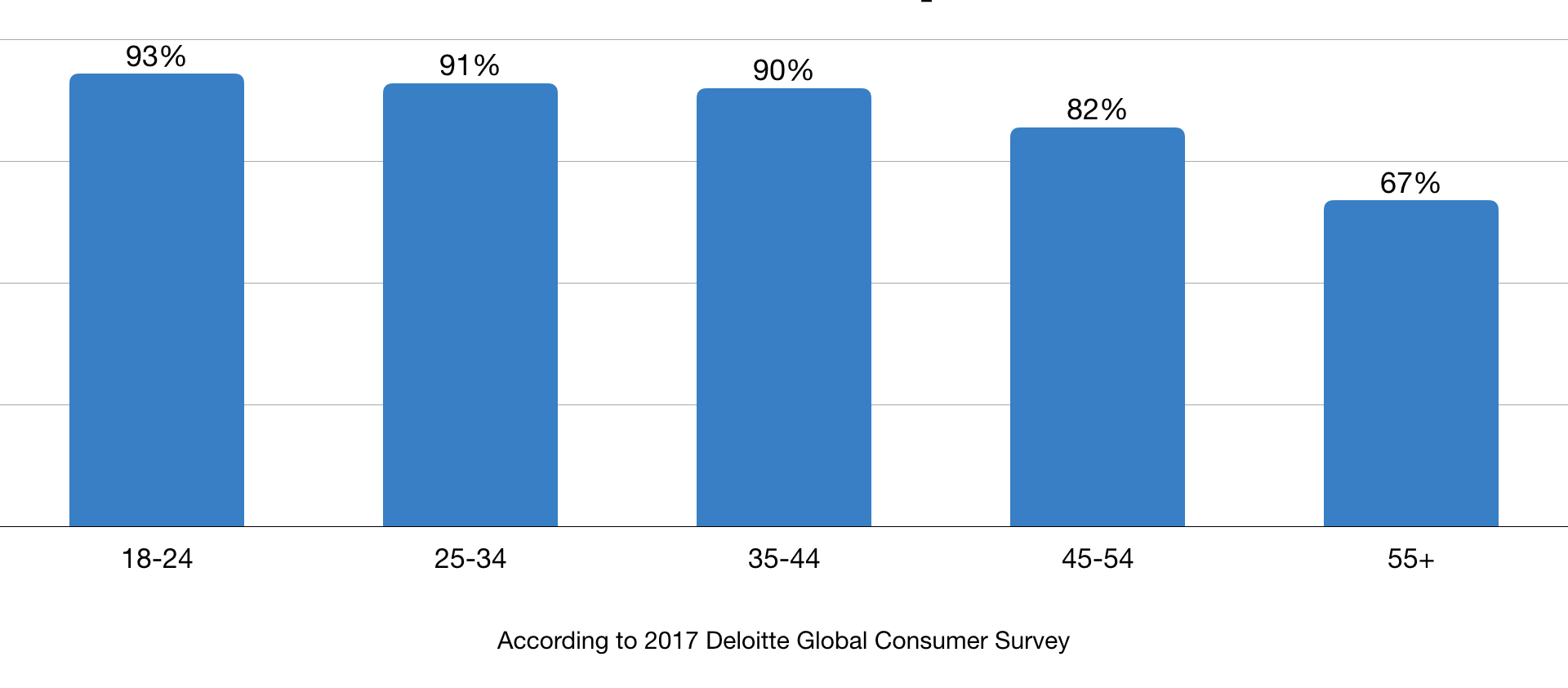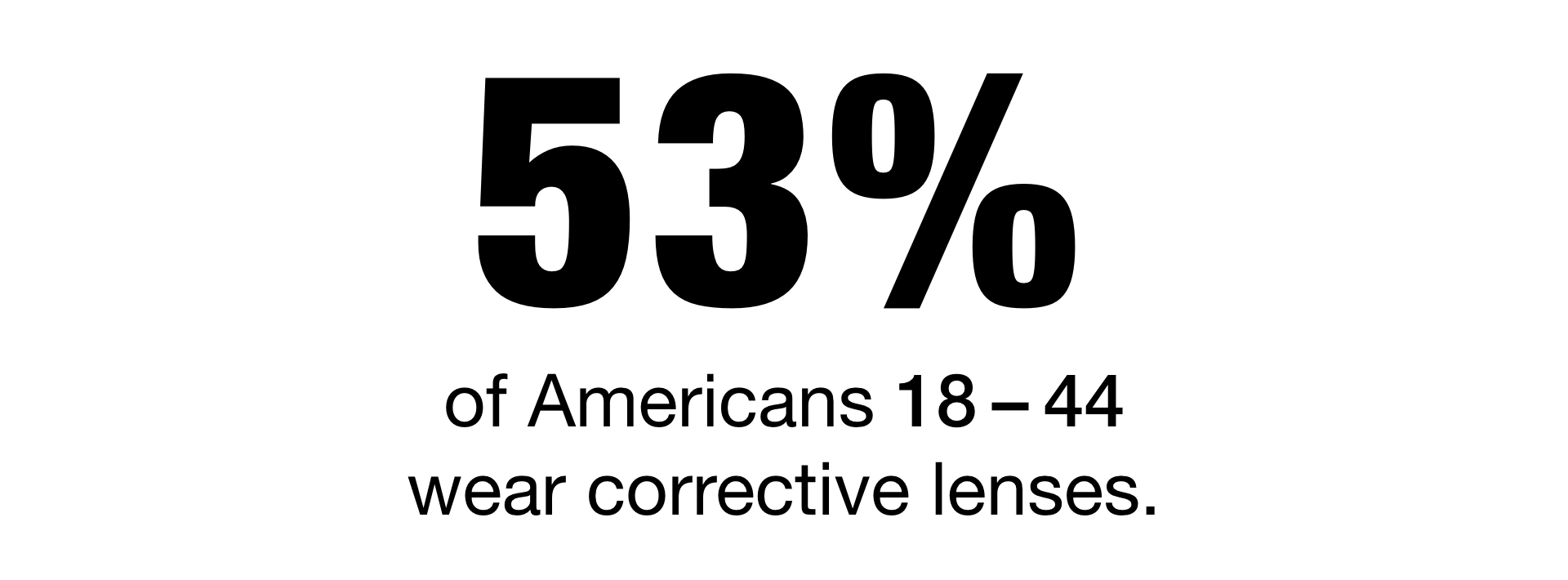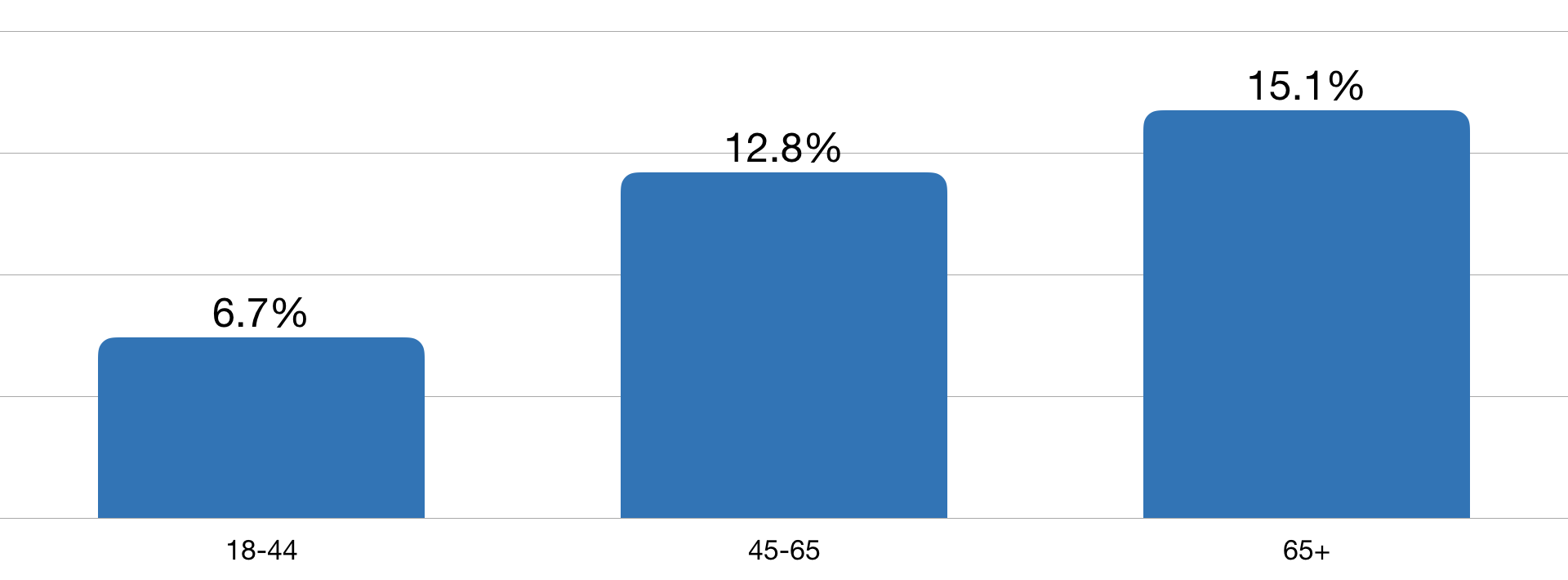Unless you’re building an open source app like NetNewsWire you need to make money from your app. One way or another. Either you make money by convincing your users to pay you for goods and services, or you show advertisements for someone who wants to sell your users goods and services. If you’re making your money by harvesting and selling user data, you should reconsider your life choices.
Maybe you’re an independent developer and you’re trying to decide between enhancing your app to support Voice Over or diving into a feature that can take advantage of CreateML. Maybe you’re not the one prioritising the features in your app. Maybe that’s your boss, the product owner, or a client. I’d like to give you enough information to open a discussion with them. Maybe you can change their mind.
Who uses smartphones?
Ten years ago, the answer might have been “young people”, but the market for smartphones is nearly saturated in all age groups. The graph below shows global usage for 2017. It isn’t until you get people between 45 and 54 that usage drops below 90% to 82%. Again, this is from 2017. Two years ago. I would expect these numbers to show continued growth in 2020.

Why should you care what age groups use smartphones? If we look at average American salaries, we can see folks don’t start earning much until they hit “middle age” or around 35 years old.
Average American Salaries

Yes, it’s true. Average Americans do not make the same amount of money as software developers do. Additionally, it isn’t until they’ve reached 35 or so that they begin to accumulate any wealth. Presumably this is because they’ve paid off their student loans, stopped partying all the time1, and settled in to save up for a house.
Average American Net Worth

The lesson to learn from this is if you want to target Americans with some disposable income and a bit of accumulated wealth, a good age range to consider is between 35 and 55 years old. Its probably sensible to market to them at earlier ages to develop an aspiration for your product or simply to bring them into the revenue generating funnel.
However, if you want people to part with their money, you also want to make it as easy for them as possible. That means making your app as pleasant to use as possible. As much as a smooth animation impresses all your developer friends average consumers are more swayed by whether an app is easy to use. One factor in whether an app is easy to use is whether they can see it clearly.

Between the ages of 45 and 54, that number goes up to 67%. And more than ¾ of Americans over 55 wear corrective lenses. Needing reading glasses becomes super common after age 40 regardless of other vision problems. Although I need my glasses to see things far away, I can’t count the number of times I’ve had to take them off to read my phone in order to get directions or interact with an app while outside. This is particularly frustrating when I’m wearing my prescription sunglasses.
Americans with Vision Impairments

In this case, a vision impairment is defined as having less than 20/40 vision even with corrective lenses. I know I’ve been in product pitches where the phrase “All we need is 5% of the market and we’re set!” was bandied about. I’m not saying you should refocus your app to exclusively target users with vision limitations, but it does seem bonkers to just write off a large part of the market.
Legal repercussions to inaccessibility
Recently Domino’s Pizza fought against making their web site and app accessible for people with vision limitations. This is because the people who run Domino’s Pizza are terrible people. After a prolonged battle, they were dealt a resounding defeat in court with the following judgement:
The “inaccessibility of Domino’s website and App impedes access to the goods and services of its physical pizza franchises — which are places of public accommodation.”
While the Americans with Disabilities Act clearly defines a “place of public accommodation”, if our apps represent the only way for customers to interact with our products, we should expect to come under similar scrutiny. Furthermore, juristictions like the European Union which are known for genuinely caring about human rights may have more stringent requirements for the accessibility of web sites and apps.
Maybe you’re young and don’t wear glasses today, but chances are good you will by the time you’re in your 40s. An investment in building a considerate app is an investment in your own future.
-
I don’t think the inability to accumulate wealth among younger folks is really a case of partying all the time. Instead I think it’s a lack of focus. I know in my own case, saving money for the future simply didn’t occur to me until I was in my 30s. ↩︎